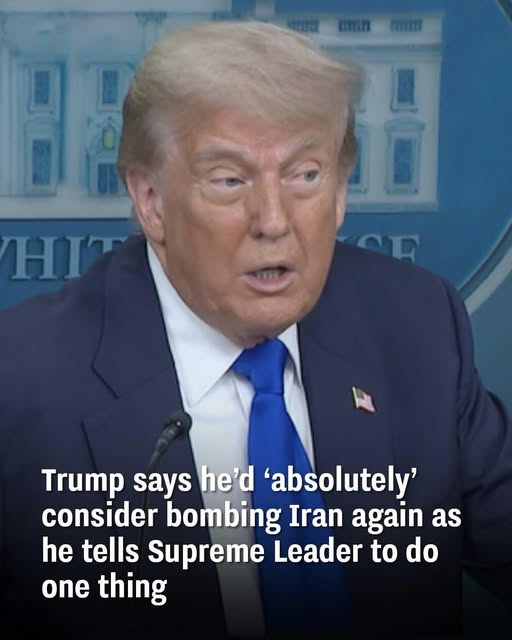
In a high-stakes White House press briefing this week, former President Donald Trump addressed mounting fears over renewed volatility in the Middle East. When asked whether he would consider authorizing another strike on Iran following recent intelligence revelations, Trump didn’t mince words.
“Sure, without question, absolutely—it has to be unbelievable,” he said, signaling a willingness to escalate.
His remarks came just days after the United States launched coordinated strikes on several of Iran’s key nuclear facilities, including Fordow, Natanz, and Esfahan. Administration officials hailed the operation as a success, with Trump claiming the targets were “completely obliterated.” But the destruction left a deep undercurrent of instability in its wake.
Ceasefire in Name Only
Iran responded swiftly, firing missiles at U.S. military installations in Iraq and Qatar. Although no casualties were reported and a tenuous ceasefire technically remains in place, officials warn it may be more performative than practical.
“There’s a lot happening beneath the surface,” one defense analyst noted. “The public sees calm, but behind the scenes, tensions are near boiling point.”
Trump’s defiant tone only added to the volatility. While emphasizing that Iran and Israel are both “exhausted” by years of conflict, he insisted the people of the region crave peace above all.
“They’re not thinking about uranium,” Trump said. “They’re thinking about tomorrow—just trying to live.”
A Thinly Veiled Warning to Khamenei
During the briefing, Trump also took aim at Iran’s Supreme Leader, Ayatollah Ali Khamenei. While avoiding specific references, Trump issued a pointed message following reports that Khamenei had denounced U.S. and Israeli actions in a recent statement.
“He knows what to do,” Trump said, in a tone widely interpreted as a warning.
Khamenei, reportedly sheltering in a secured location amid regional instability, made a brief social media appearance earlier this week to criticize U.S. aggression—his first in weeks.
Global Anxiety, Regional Fallout
The international community is watching nervously. Leaders from France, Germany, and the UK have issued urgent calls for de-escalation and diplomacy. The UN Security Council is set to convene in a closed-door session to evaluate the risks of further military engagement.
On the ground, citizens across Iran and neighboring states are gripped by growing uncertainty. Energy markets have reacted sharply, and fears of a broader conflict ripple far beyond the region.
“This isn’t just about the U.S. and Iran anymore,” said a political analyst in Istanbul. “Each missile strike sends shockwaves that destabilize an entire region.”
What Lies Ahead?
While Trump’s rhetoric underscores that military force remains on the table, his administration continues to frame its actions as part of a broader deterrence strategy. Officials insist the goal is not war, but to halt nuclear development and restore regional balance.
Still, with both sides entrenched and mistrust deepening, the margin for error is dangerously thin.
Whether this signals the dawn of a new era in U.S.-Iran relations—or simply another cycle in an endless loop of escalation—remains to be seen. But one fact is undeniable: the stakes are rising, and the world is watching.